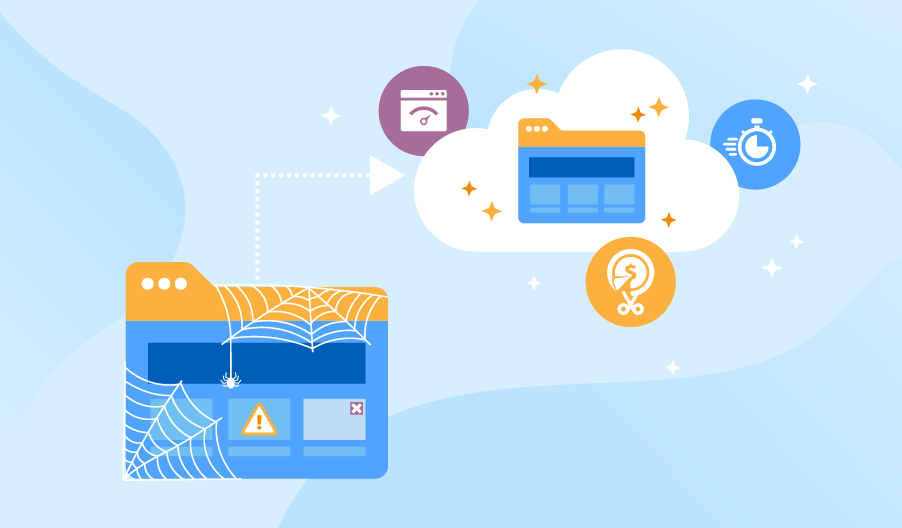Migrating Legacy Systems to Modern Architectures: Strategies for Seamless Transitions Without Downtime
 Ahmad W Khan
Ahmad W Khan
Table of Contents
Introduction
Understanding Legacy Systems
Benefits of Modern Architectures
Pre-Migration Planning
Assessing the Current System
Defining Objectives and Requirements
Selecting the Right Modern Architecture
Migration Strategies
Lift and Shift
Replatforming
Refactoring
Rebuilding
Technical Considerations
Data Migration
API Integration
Security and Compliance
Performance Optimization
Minimizing Downtime
Blue-Green Deployment
Canary Releases
Rolling Updates
Feature Toggles
Detailed Case Studies
Migrating a Monolithic E-Commerce Platform to Microservices
Legacy ERP System to Cloud-Native Solution
Post-Migration Best Practices
Monitoring and Maintenance
Continuous Integration and Deployment
User Training and Documentation
Conclusion
1. Introduction
Migrating legacy systems to modern architectures is essential for organizations to remain competitive in today’s fast-paced technological landscape. This comprehensive guide provides an in-depth look at the entire migration process, from initial assessment to post-migration maintenance, tailored for fellow developers, DevOps engineers, and anyone else seeking to understand the complexities involved.
2. Understanding Legacy Systems
Legacy systems are outdated computing software or hardware that are still in use. They are often critical to business operations but pose several challenges:
Technological Debt: Accumulated inefficiencies that make maintenance difficult.
Security Risks: Older systems are more vulnerable to security threats.
Scalability Issues: Limited ability to handle growing workloads.
Integration Challenges: Difficult to integrate with new technologies.
Example
Imagine a legacy ERP (Enterprise Resource Planning) system built on Code PHP that has been in use for decades. The system is essential for managing business processes but is increasingly hard to maintain and integrate with new tools.
3. Benefits of Modern Architectures
Modern architectures provide several advantages:
Scalability: Easily scale resources to handle increased load.
Flexibility: Integrate with new technologies and services.
Maintainability: Simplified maintenance and updates.
Security: Enhanced security measures and compliance capabilities.
Cost Efficiency: Reduce infrastructure and operational costs.
Example
Migrating to a microservices architecture allows an e-commerce platform to independently scale services such as user authentication, payment processing, and product catalog management, ensuring better performance during peak times.
4. Pre-Migration Planning
Assessing the Current System
Before migration, thoroughly assess the existing system:
Codebase Review: Identify dependencies and potential issues.
Performance Metrics: Gather data on system performance and bottlenecks.
Stakeholder Interviews: Understand the needs and expectations.
Example
An assessment of a legacy CRM (Customer Relationship Management) system might reveal outdated APIs, inefficient database queries, and user interface issues.
Defining Objectives and Requirements
Clear objectives and requirements are crucial:
Performance Improvements: Faster load times, reduced latency.
Scalability: Ability to handle increased traffic.
Integration: Compatibility with modern tools and services.
Security: Enhanced protection against threats.
Example
For an online retail business, objectives might include reducing page load times, integrating with modern payment gateways, and ensuring compliance with GDPR.
Selecting the Right Modern Architecture
Choose an architecture that aligns with your objectives:
Microservices: Decompose applications into smaller, independent services.
Serverless: Run code without managing servers.
Containers: Package applications and dependencies into containers for consistency.
Example
A healthcare application could benefit from a microservices architecture, where patient management, appointment scheduling, and billing are handled by separate services.
5. Migration Strategies
Lift and Shift
Move the existing system to a new environment with minimal changes.
Pros: Quick implementation, minimal code changes.
Cons: Limited performance improvements.
Example
Moving a legacy website to a cloud infrastructure using virtual machines without modifying the application code.
Replatforming
Make minor changes to optimize for the new environment.
Pros: Improved performance, better resource utilization.
Cons: Requires some code changes.
Example
Upgrading an application from an old database to a modern relational database service (RDS) on AWS.
Refactoring
Rewrite parts of the application to improve structure and performance.
Pros: Significant improvements, easier maintenance.
Cons: Time-consuming, extensive testing required.
Example
Refactoring a monolithic application to use microservices, improving scalability and maintainability.
Rebuilding
Create the application from scratch using modern technologies.
Pros: Fully optimized for the new environment.
Cons: High resource requirements, lengthy development time.
Example
Rebuilding an old financial application using modern frameworks like Spring Boot for Java or Django for Python.
6. Technical Considerations
Data Migration
Data migration is often the most challenging part of the process:
Data Mapping: Ensure data formats are compatible.
Data Integrity: Maintain accuracy and consistency.
Data Security: Protect sensitive data during migration.
Example
Using AWS Database Migration Service to transfer data from an on-premises SQL Server to Amazon RDS.
API Integration
APIs enable communication between the new system and existing services:
RESTful APIs: Standard web service communication.
GraphQL: Flexible querying for specific data needs.
Middleware: Facilitates integration between different systems.
Example
Implementing RESTful APIs to allow a new front-end application to interact with an existing backend service.
Security and Compliance
Ensure the new system meets security and compliance standards:
Encryption: Data encryption at rest and in transit.
Authentication and Authorization: Robust mechanisms to control access.
Compliance: Adhere to industry standards like GDPR and HIPAA.
Example
Implementing OAuth 2.0 for secure user authentication in a healthcare application.
Performance Optimization
Optimize the new system for performance:
Caching: Reduce load on backend systems.
Load Balancing: Distribute traffic evenly.
Database Optimization: Use indexing and query optimization.
Example
Using Redis for caching frequently accessed data to improve response times in a high-traffic web application.
7. Minimizing Downtime
Blue-Green Deployment
Run two identical production environments (blue and green). Traffic is switched from blue to green once the update is complete.
Pros: Zero downtime, easy rollback.
Cons: Requires duplicate infrastructure.
Example
Deploying a new version of a web application on the green environment, then switching traffic from the blue to green environment after testing.
Canary Releases
Roll out updates to a small subset of users before a full release.
Pros: Reduced risk, incremental updates.
Cons: Complex implementation.
Example
Releasing a new feature to 10% of users to monitor performance and gather feedback before a full rollout.
Rolling Updates
Update instances in phases, testing each instance before moving on to the next.
Pros: Minimal downtime, continuous deployment.
Cons: Requires robust testing.
Example
Updating a microservices-based application one service at a time, ensuring each update is stable before proceeding.
Feature Toggles
Enable or disable features without deploying new code.
Pros: Flexible deployments, easy rollback.
Cons: Increased code complexity.
Example
Using feature flags to enable a new user interface for a subset of users while keeping the old interface for others.
8. Detailed Case Studies
Case Study 1: Migrating a Monolithic E-Commerce Platform to Microservices
Background: A company with a monolithic e-commerce platform faced scalability and maintenance issues.
Objective: Migrate to a microservices architecture to improve performance and scalability.
Steps:
Assessment: Identified tightly coupled services within the monolithic application.
Planning: Created a migration plan with a timeline and resource allocation.
Implementation:
Decomposed the monolith into services such as user management, product catalog, and order processing.
Used Docker for containerization and Kubernetes for orchestration.
Implemented RESTful APIs for communication between services.
Migrated data incrementally using database replication.
Testing: Conducted unit, integration, and performance tests.
Deployment: Employed blue-green deployment to switch from the monolith to the new architecture.
Monitoring: Set up Prometheus and Grafana for real-time monitoring.
Results: Improved scalability, better performance during peak times, and reduced maintenance overhead.
Case Study 2: Legacy ERP System to Cloud-Native Solution
Background: A manufacturing company used a legacy ERP system built on core PHP.
Objective: Migrate to a cloud-native ERP solution to enhance scalability and reduce operational costs.
Steps:
Assessment: Evaluated the legacy ERP system’s functionalities and dependencies.
Planning: Defined clear objectives, including performance improvements and cost reduction.
Implementation:
Chose a cloud-native ERP solution.
Replatformed critical components to run on AWS.
Integrated with existing on-premises systems using APIs.
Data Migration: Used AWS Database Migration Service to transfer data.
Testing: Conducted thorough testing to ensure data integrity and system functionality.
Deployment: Used rolling updates to migrate users to the new system gradually.
Monitoring: Implemented AWS CloudWatch for monitoring and alerts.
Results: Enhanced scalability, reduced operational costs, and improved system performance.
9. Post-Migration Best Practices
Monitoring and Maintenance
Monitoring Tools: Use Prometheus, Grafana, and ELK stack.
Automated Alerts: Set up alerts for critical issues.
Regular Maintenance: Schedule maintenance to ensure system health.
Continuous Integration and Deployment
CI/CD Pipelines: Implement pipelines using Jenkins, GitLab CI, or GitHub Actions.
Version Control: Use Git for managing code changes.
User Training and Documentation
User Training: Provide training sessions and materials.
Documentation: Maintain comprehensive documentation for developers and users.
10. Conclusion
Migrating legacy systems to modern architectures is a complex but rewarding process. By following a structured approach and leveraging modern tools and techniques, businesses can achieve a seamless transition with minimal downtime. This guide provides a detailed roadmap for fellow developers and DevOps engineers, ensuring a successful migration and maximizing the benefits of modern technologies.
If you are considering migrating your legacy systems to modern architectures and need expert guidance, I can help. With over a decade of experience as a seasoned engineer and tech lead, I specialize in helping businesses like yours navigate the complexities of system migration. Let's discuss your migration process and explore how I can assist you in achieving a seamless and efficient transition.
Visit my website at AhmadWKhan.com to learn more and get in touch. Let's make your migration journey a success!
Subscribe to my newsletter
Read articles from Ahmad W Khan directly inside your inbox. Subscribe to the newsletter, and don't miss out.
Written by
